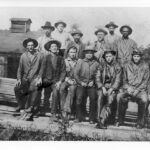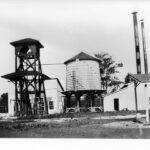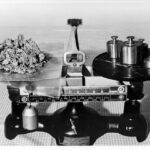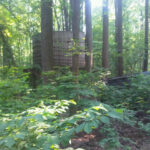Treasure in the Hills
By Ranger Betsy
During the Civil War, a Union soldier was stationed along the Maryland side of the Potomac River near Great Falls. While cleaning up in a creek, he noticed a glint of gold. After the war, he returned to the area, bought some farm land, and started mining for gold in Montgomery County. Eventually, 30 small mines were opened. One of the largest was the Maryland Mine.
Today, there is a different type of gold found in the Great Falls area around the old Maryland Mine. A loop trail starting at the Great Falls Tavern Visitors Center will take you up past the mine ruins, but the trail itself is the real gold. The trail is appropriately named the Gold Mine Trail.
The Gold Mine Trail is a three-mile loop that usually takes about an hour to complete. It truly is a trail for all seasons. Its towering trees will protect you from the harsh sun in August, provide shelter from spring rains, and give you a glorious show of autumn color in the fall. During the winter snows, look for footprints of the many woodland creatures that call the Gold Mine Trail home.
Each time I walk the trail I see something new. Every bend in the trail provides new opportunities to view wildlife and enjoy the beauty of the woods. Pileated Woodpeckers seem to laugh above your head. Deer and fox abound. There is also a huge diversity in plant life, from Jack in the Pulpit to Red Bud. It is definitely a trail for the nature lover.
If you're looking for a longer hike, try one of the spur trails that run off of the Gold Mine Trail. Several different trails connect the Gold Mine Trail to the Anglers section of the park. I recommend the Overlook Trail. It takes you up on a ridge that provides great views of the Potomac River. It's one of my favorite places in the park.
Although the gold mines have long since closed, there is still plenty of evidence of the operation just off the Gold Mine trail. A wayside exhibit along the trail will explain the mines and the mining process for you. Just please remember to follow the golden rule of hiking in national parks: leave only footprints, take only memories.
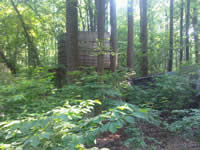
Maryland Mine Ruins
Milepost 14
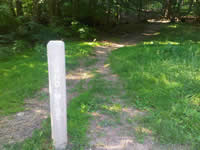
Ford Mine Trail
Milepost 14.7
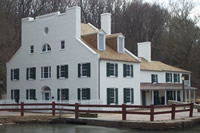
Great Falls Tavern Visitors Center
Milepost 14.4
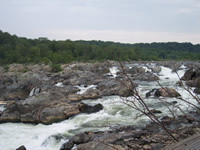
Great Falls
Milepost 14.1
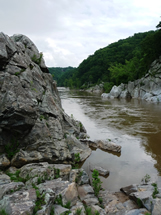
Mather Gorge
Milepost 14

